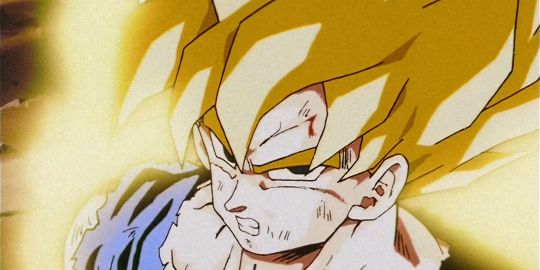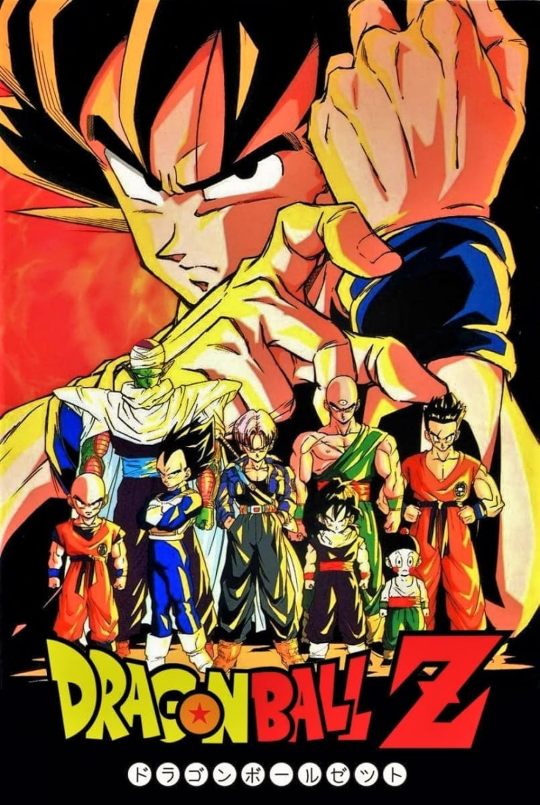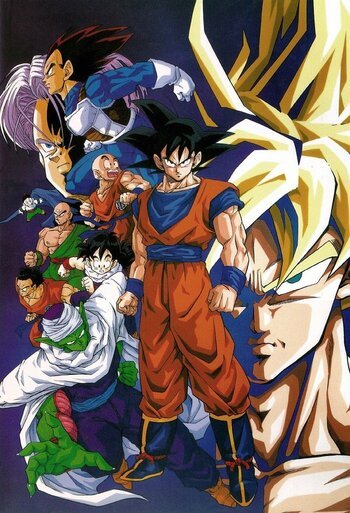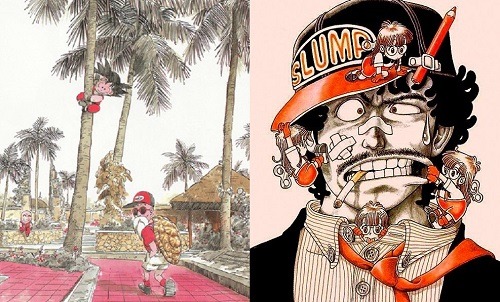#thank you toei
Explore tagged Tumblr posts
Text


Never over that moment during the raid on Onigashima, when Sanji is happy that Zoro is back up and fighting again, expresses it in his usual way of bickering with him, but then lets his mask slip for just a second—
#one piece#zosan#zoro x sanji#zoro#sanji#black leg sanji#one piece wano#wano spoilers#one piece gifs#i'm obsessed with this little smile he lets slip it's so cute#also the way he says “kuso kenshi” is so soft :')#caught in 4k#thank you toei#every time i do a wano rewatch i rewind this part about 50 times lmao#my gifs
222 notes
·
View notes
Text

꒰。- ᴗ - 。꒱ ᶻzᶻ
//new op dropped some crumbs I just had to draw them
#frobin#franky x robin#they so eepy#notice how they adopt everyone that’s pink like chopper and ryunosuke#thank you toei#nico robin#frobin canon#cyborg franky#one piece#op fanart
443 notes
·
View notes
Text




insane franky screencaps from today's episode
55 notes
·
View notes
Text

they ask you how you are and you just have to say that you are fine, but youre not really fine but you just cant get into it because your captain ordered not to
#bepo chan's beautiful breakdown on loop for my personal bepo chan beautiful breakdown needs#one piece#thank you toei
190 notes
·
View notes
Text
what'd they animate this shot all sexily for...
#dragon ball#tien shinhan#tenshinhan#db caps#thank you toei#can you believe i cannot find a dakimakura design for this man on the internet#unbelievable
21 notes
·
View notes
Text

Law is breasting boobliengly- them bouncyfull milkies - his honker-bonker-doinky-boinkies. Those fabric-stretching, wind-flapping, gravity-welling sex mounds. HIs super duper, ultra hyper, goddamn, motherfucking tITS. I wANNA use as my pillows.
#✦.¦ ❝head empty.❞ ╱ ⠀ ooc. ⠀ ❫#trafalgar law#I want them tibbies#one piece#please I’m on my knees#forgive me#thank you toei#I’m starting to realize we are nearing THAT moment#AAAAAA
39 notes
·
View notes
Text
literally nobody: "hey, what are you thinking about rn?"
me: "oh......nothing..."
what i'm thinking about:








#EVERYONE SAY THANK YOU TOEI ANIMATION STUDIO#GOOD LORD THE THINGS THIS MAN DOES TO ME#one piece#punk hazard#one piece punk hazard#one piece trafalgar law#op trafalgar law#trafalgar law#one piece law#op law
189 notes
·
View notes
Text

rumor says you're dead
#im a man of my word here's the car yaoi#bakuage sentai boonboomger#boonboomger#byun diesel#boondorio boonderas#dumbest character names ever created thank you toei#boonbyun#post tag#art tag
141 notes
·
View notes
Text
I hope everyone is prepared for me to be absolutely insufferable about Gavv for the next 11 months, because the last time I experienced this set of emotions, BUILD was airing.
#kamen rider#kamen rider gavv#it is For Me#we are so fucking back#and to think i was worried i had lost interest in Rider#yeah fuckin right#thank you for this gift John Toei
29 notes
·
View notes
Text
God I love Toriyama's Goku.
#dbtag#icb Toei's weird writing convinced me this man was boring and generic for so long#when this whole time he's been a delightful problematic darling little shit#I'm so glad I read through all of the manga this year and finally watched the newer movies oh my god#I hadn't read Z in so long and I'd only seen the anime for DB and a handful of super eps after seeing BotG way back when#and my god what a world of difference his writing makes#Daima is feeding me and my headcanons and my reads and tastes sO WELL it's like reading through Super's manga again#lays on the floor I'm so happy thank you toriyama
23 notes
·
View notes
Text
Me and my brothers have been rewatching DBZ for the last few days. For obvious reasons.
And I'd not necessarily forgotten how much I love this anime (because i talk about it a lot). So much as I'd forgotten how good it actual is. Like I've always know, but having the opportunity to rewatch it is amazing. I'm having flashbacks to being a kid and running around doing Kamehamehas and beam struggles with my siblings.
I've always told people that my Goku going super Saiyan for the first time is one of my most favorite moments in anime.

It's a beautifully written scene that aways make me emotional. I mean just imagine what Goku must have been feeling he just used his penultimate attack to defeat the ultimate evil. He's happy and celebrating this moment with his friends only for said evil to rise again. He's out of energy. They're doomed.
Piccolo is there. Krillin is there. Gohan his son is there. They need to escape.
Then boom his best friend is killed right in front of him. Unleashing Gokus rage and vengeance. The fact that Goku went super Saiyan not because he wanted power or he asked for it, but it happened as a reaction to the death of his best friend.
I think with time people have forgotten who Goku originally was. He was always a pure of heart savior who loved to fight, but always cared about protecting the people he loved.
#dbz#akira toriyama#rip toriyama#thank you toriyama#dragon ball#dragon ball z#goku#son goku#gohan#son gohan#piccolo#krillin#toei animation#anime#anime review#character analysis
63 notes
·
View notes
Text

LINE READING SO DEVASTATING I NEED TO DIE ABOUT IT
#THE WAY POND'S FACE GOES FROM CLOSED OFF AND ANTAGONISTIC TO SLIGHTLY CONFUSED AND OPENLY VULNERABLE#[CLAWS MY FACE OFF AND THROWS IT INTO THE OCEAN]#i didn't add phum in the poll about my faves because we still have four episodes left and palm was already there but#GOD I LOVE THIS BOY SO MUCH#I COULD TALK ABOUT HIM FOR DAYS#and it's just so interesting how up until this point you buy into that mask of cool popular asshole he has been wearing around peem#and when in the first episode q says 'i've heard he's a top brat' and chain adds 'nobody messes with him unless they want trouble'#you're like yeah that checks out#and it's not like that's not true because phum can be all that#but also it makes you think about how people must have treated him in the past#not just his parents but his peers as well once he got back to thailand#because he puts that mask on with everyone when at his core he is actually such a soft boy who feels so much#toey used to get bullied and he took him under his wing#he learns that peem waited for him and feels so bad he keeps asking for forgiveness#the story started because phum wouldn't say sorry to peem but now the sorrys and the thank yous are like a second language to him#AND IDK WHERE AM I GOING WITH THIS OR WHAT AM I EVEN SAY I JUST KNOW I HAVE SOOOOO MANY FEELINGS ABOUT PHUM#IM ONCE AGAIN ASKING FOR HELP#we are the series#m: txt
50 notes
·
View notes
Text
Happy 35th Anniversary to Dragon Ball Z!



#dragon ball z#dragon ball#dbz#toonami#toei animation#akira toriyama#toriyama akira#toriyama#rip toriyama#toriyama sensei#thank you toriyama#rest in peace toriyama
36 notes
·
View notes
Text
Daydream Generation: The Lasting Legacy of Akira Toriyama's Work

Here on AcquiredStardust we don't talk about anime enough and we wish that beginning to rectify this could've come under better circumstances. Just what is the Daydream Generation anyway? Join Ash as she attempts the impossible task of summarizing the importance of the 'god of manga' Akira Toriyama after his passing earlier this month in this special tribute.
Late Thursday night news finally broke on social media that beloved manga author Akira Toriyama had passed away several days before, prompting an immediate outpouring of grief the world over. Many of us feel a deep sense of loss in a way unimaginable before his work achieved the level of cultural penetration and ubiquitous veneration that it has, and it is impossible to overstate the singular importance he had in shaping our modern culture.
Responsible for hit manga Dr. Slump and Dragon Ball which quickly found themselves at the forefront of the Japanese pop culture renaissance of the Showa period, Toriyama's work is possessed of a rare combination of an earnest childlike wonder and adventure that is perfectly serviced by an instantly recognizable art style that is something of a rite of passage to for budding artists to imitate. It is in that Showa boom period that the Daydream Generation, a term coined by Toriyama disciple Yoshihiro Togashi's Yu Yu Hakusho particularly as the title of its 5th ending theme, is forged.
It is no overstatement to refer to Akira Toriyama as "the god of manga", and in fact he is referred to as such by Masashi Kishimoto of Naruto fame. It is Kishimoto's generation, coming of age in the Showa era in which Toriyama produces his most significant works, that finds themselves first so captivated by it. Although anime is in the middle of a golden age by the time Toriyama's work is published (lead perhaps most by Leiji Matsumoto of Galaxy Express 999/Captain Harlock fame and Mobile Suit Gundam visionary Yoshiyuki Tomino), Toriyama's work forges a connection with Japanese readers in a way that other work hasn't quite in the same way.
Perhaps it is the clean linework, deceptively simplistic and stylish all at once. Perhaps it is the expressive characters often named with clever puns or food related names. Perhaps it is familiar cultural touchstones and elements of comedy and parody rolled seamlessly into each other. Perhaps it is the refinement in elements popularized by contemporary works like Ring ni Kakero such as the frequent use of tournaments as a framing for the plot Perhaps it is the rare ability for Toriyama to create characters that often appeal equally to male and female readers without either demographic rejecting them, feat only rivaled with any real frequency by authors Rumiko Takahashi and Hiromu Arakawa.
Regardless of the cause, the strong creative voice and earnestness that shines through Dr. Slump and Dragon Ball does something special for children of the Daydream Generation: it makes the job of creating manga seem more attainable than other works of the time do. It gives a generation of children the ability to dream, some for the first time, of their own works. It is in the immediate wake of these works that authors such as Masashi Kishimoto, Yoshihiro Togashi, Tite Kubo and Eiichiro Oda come of age and dream of their own works in direct inspiration from them.
The Daydream Generation, sat in their desks at class fantasizing about a world in which they too would be able to pursue creative dreams in a postwar Japan perhaps otherwise unattainable to them without first being armed with the sense of accessibility that Toriyama provided readers, affectionately refer to Toriyama as 'sensei' nearly universally. It is he who is the god of manga, revered and emulated - Toriyama, more so than any individual, is responsible for the explosion of Japanese pop culture in this era and many manga authors are frank in their admittance of such. It isn't just limited to the world of manga either, as Toriyama has a hand in multiple iconic video games such as Enix's Dragon Quest and Square's Chrono Trigger.
But then something equal parts special and unlikely happens: in the late 1990s Toriyama's work begins to be exported into the west with relatively minimal changes to the source material, and the whole process repeats itself. This time with a constant flow of follow up works by the Daydream Generation to help Japan's global pop culture takeover.
Anime's infiltration into the west played out on college campuses, and in those early days of fandom defined by import VHS and LaserDisc it was nearly unthinkable that it would end up mainstream enough to appear on television. While early ground is gained on anime in the mainstream (particularly Ronin Warriors hitting television in a largely unedited form in 1995 as well as multiple attempts to import Sailor Moon around the same timeframe, not to mention Pokemon's debut in late 1998), it is not until the revamping of Cartoon Network's Toonami block, spearheaded by Dragon Ball Z, that anime would truly arrive in the west.
The importance of Toonami in getting anime in front of the eyes of the generation following the Daydream Generation in America cannot be overstated. It was the first time many of us laid eyes on animation that wasn't an episodic comedy, with more mature themes. It was the first time we had encountered drastic cultural differences inherent in anime. For many of us, particularly in the case of Dragon Ball Z, it was even the first time we began to see animation and even creativity as being something that comes from someone rather than spontaneously generating itself for consumption. For the first time in my memory a mania kicked off with the addition of Dragon Ball Z to Toonami in 1999 that changed the way my generation thought about and consumed media.
Gathered around our own desks ten plus years later, American children male and female alike passionately discussed Dragon Ball Z. We debated power levels, questioned what other planets and races populated the universe of the series, and for the first time we discussed concepts that were unknown to us just a short time before: who was the creator of this series and where did it come from? Mirroring the effect that Toriyama's work had on the Daydream Generation many Milennials and Gen X people, especially those with no prior introduction to anime, found themselves absolutely captivated by Dragon Ball Z. Millions of young people put pencil to paper for the first time to imitate the art style of Toriyama brought to animated glory by the staff at Toei or to write fanfiction. We developed these skills and collaborated with each other now armed with the same sense of approachability that the Daydream Generation had years before us. And then the hits kept coming. Serving as a gateway into a world of animation previously largely unknown in the west, Toonami exploded in the following years.
Starting in 2000 Toonami added Tenchi Muyou, a series almost completely different to Dragon Ball Z which would go on to be an influence in Dana Terrace's recent Disney hit The Owl House, and Mobile Suit Gundam Wing. The Gundam franchise, originally popular in Japan contemporaneously with Akira Toriyama's work, had seen many followups and spinoffs in the years after the original series ended and had itself become a titan of Japanese pop culture. Finally hitting the west using Dragon Ball Z as a bridge, it was the first time many of us were introduced to animation as a medium for communicating complicated political ideas.
Perhaps most significantly, as is easily observed through diving into the wealth of old abandoned websites from the Geocities era, Gundam Wing served as a vehicle through which young people were introduced to male characters that all seemed to have romantic chemistry with each other. Having both lived through the era and examining it in retrospect I say with all sincerity that it was Gundam Wing that helped begin the yaoi craze in the west, by then a well established thing in Japan, and was therefore absolutely instrumental in beginning to soften the attitudes of young people towards queer people in the west.
A strong hunger for more of this extremely different kind of animation had been created and the floodgates were about to open. Years immediately following saw the broadcast of memorable anime such as Outlaw Star and The Big O. 2003 saw Nobuhiro Watsuki's unavoidably Japanese historical fiction piece Rurouni Kenshin debut in America, Yoshihiro Togashi's Yu Yu Hakusho finally make the transition to the west followed by Eiichiro Oda's One Piece and Masashi Kishimoto's Naruto in 2005. Each of these works massively impacted my generation and empowered us in a different way: whereas the Daydream Generation saw the opportunity to create their own works my generation had the luxury of exploring these works, full of ideas and states of being unknown to us before then. We were armed with the ability not just to create our own works but to create ourselves and to decide who we would be far more liberally than we would have otherwise been comfortable doing in the past.
It is worth noting that Toonami did not have total dominion over the boom of anime in America: while there were others in later years, latenight programming [Adult Swim] pursued an older viewer who was hungry for even more of what the wide world of anime had to offer. Rumiko Takahashi's Inuyasha was an early favorite alongside the likes of such classics as Cowboy Bebop, Trigun and FLCL. Already massively influential in his own right, it was using Akira Toriyama's work as a foothold that quite literally proved to be the breakthrough moment for anime in the west and provide any of these incredible shows with an audience here.
As such there are few people you can point to as singularly responsible for shaping the way our culture (and that's culture at large - not just pop culture) works. Akira Toriyama's name is up there with the likes of Walt Disney and George Lucas in its weight. His works and the bridge they provided to other works helped to reshape the way we communicated with each other, the ways in which we saw ourselves, and the things we dared to dream. Millions and millions of people pursued writing or drawing, or the powerful physiques of Akira Toriyama's characters featured in Dragon Ball, and those who were inspired by him continue to share his work with their offspring ensuring his timeless classics remain in circulation perpetually.
He is, while not the origin point, the biggest guiding hand in so many aspects of our culture and the man most singularly responsible for the exporting of Japanese pop culture to the world. He has left behind an incredible legacy that few could ever hope to achieve and fewer yet will, and more importantly he inspired generations of people to be and do things they otherwise never would've thought possible. Both directly and indirectly his fingerprints are all over what you enjoy perhaps without even realizing it, and it's unlikely that will ever go away no matter how far we get from his life and work.
#acquired stardust#anime#manga#akira toriyama#dr slump#dragon ball#dragon ball z#dragonball#dragonball z#toonami#anime spotlights#adult swim#midnight run#toei#toei animation#bird studio#ThankYouToriyama#thank you toriyama#ash
34 notes
·
View notes
Text

#and so for the fifth year in a row im let down#thanks toei#imma be honest i will most likely fall over myself cheering for the new girls#because 'precure' and 'dislike' cannot exist in the same sentence#however#until they're revealed i will complain#because COME ON#AN IDOL THEME?????? THE BLANDEST MOST MILQUETOAST THEME YOU COULD HAVE PICKED#THEY ALREADY WEAR PRETTY OUTFITS AND SING CATCHY SONGS#YOU NEED TO ADD SOMETHING DIFFERENT TO THE MIX#IT'S LIKE SAYING A DISH NEEDS SPICE AND ADDING SALT!!!!!!!!!#AAAAAAAAAAAAAAAAAAAAAAAAAAAAAA#precure#my post#my post (precure)
8 notes
·
View notes
Note
gerojim is my favourite character from king-ohger in a scrunkly sense, and the way you draw him makes me unreasonably happy so i wanted to say thank you. and also using dotted lines and lighter text for his speech bubbles is absolutely Inspired
Awwwww thanks so much, doggendoodle!!!!!!✨✨✨ I’m over the moon that people are enjoying my drawings of him. Gerojim and Jeramie are first in my heart (probably quite obvious by my drawing habbits) but learning to draw Gerojim was a hard earned feat and so i felt the need to flex that power as much as possible!!!! I want to see more images of him!!
I’m very excited about his speech bubbles, i played around with wiggly lines too but dashes were faster to draw hahaha! a good balloon design is one of my favorite things so i’m pleased the effort was noted!!!
Here’s a little scrap of dropped comic I had lying around! I think this was the first Gerojim speech I drew.

#gerojim#jeramie brasieri#spider kumonos#ohsama sentai kingohger#kingohger#super sentai#fan art#doggendoodle#ask and be answered#i love hiiiiimmm!#i love gerojim so much thank youuuuu!#i feel like i’ve taken him under my grubby little artist wings… i want to see himmmm#toei needs to make merch of him lol!#the way rita is with moffun…. i’m feeling that with Gerojim aaah#i like drawing him after a stressful day… its good for the brain lol! the effect is incredible!#this was a very nice ask an i’m very very happy#thank you ever so kindly#i’m glad we all love Gerojim. i’m shaking everyone by the hand#i see you people in my notes😆✨#one of my very wise friends said Gerojim and Jeramie have ‘share a braincell’ energy#i think this is true. they are reaching ‘do not separate’ status in my heart
72 notes
·
View notes